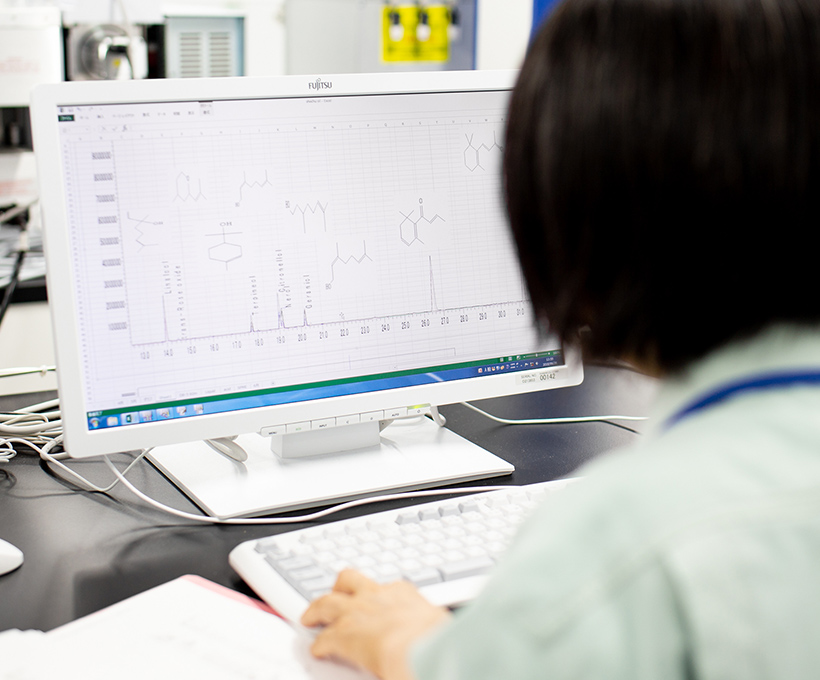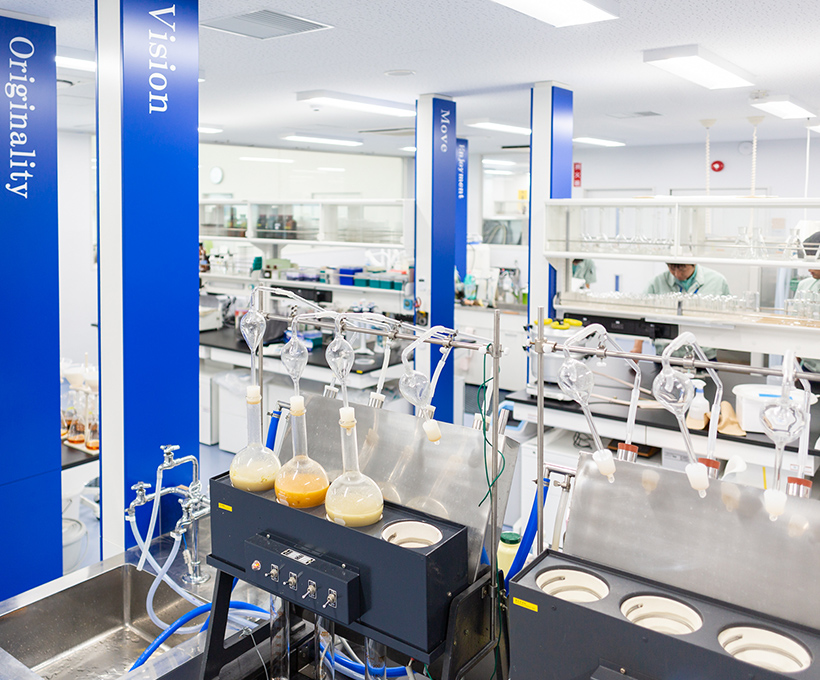As a raw material for shochu production, we do research on the hidden valued of sweet potatoes while working to develop new shochu qualities.

Research Summary
Our research on authentic sweet potato shochu includes a range of factors, like the raw materials of sweet potatoes, rice, and the koji mold used to make koji starter. We also research yeast fermentation, distillation, and aging. A proper balance of these elements results in delicious shochu. Kirishima Shuzo has developed a new level of shochu quality by incorporating innovative ideas and techniques into our over-100-year tradition.
We also conduct research on the properties of shochu, by-products from shochu production, and our health-oriented “Kenreishu.” Through these, we want to help people lead healthy and prosperous lives.
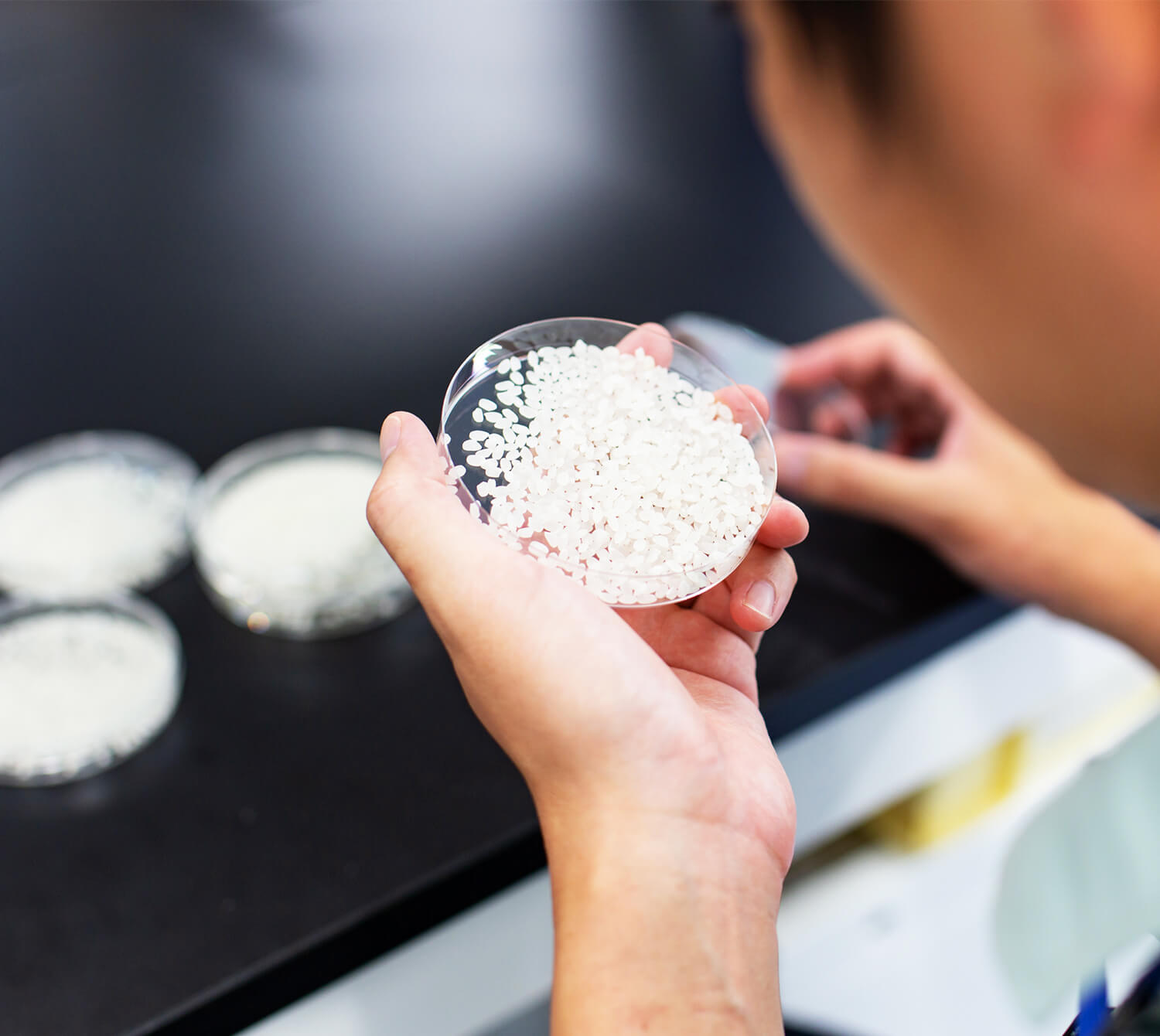
Research
1
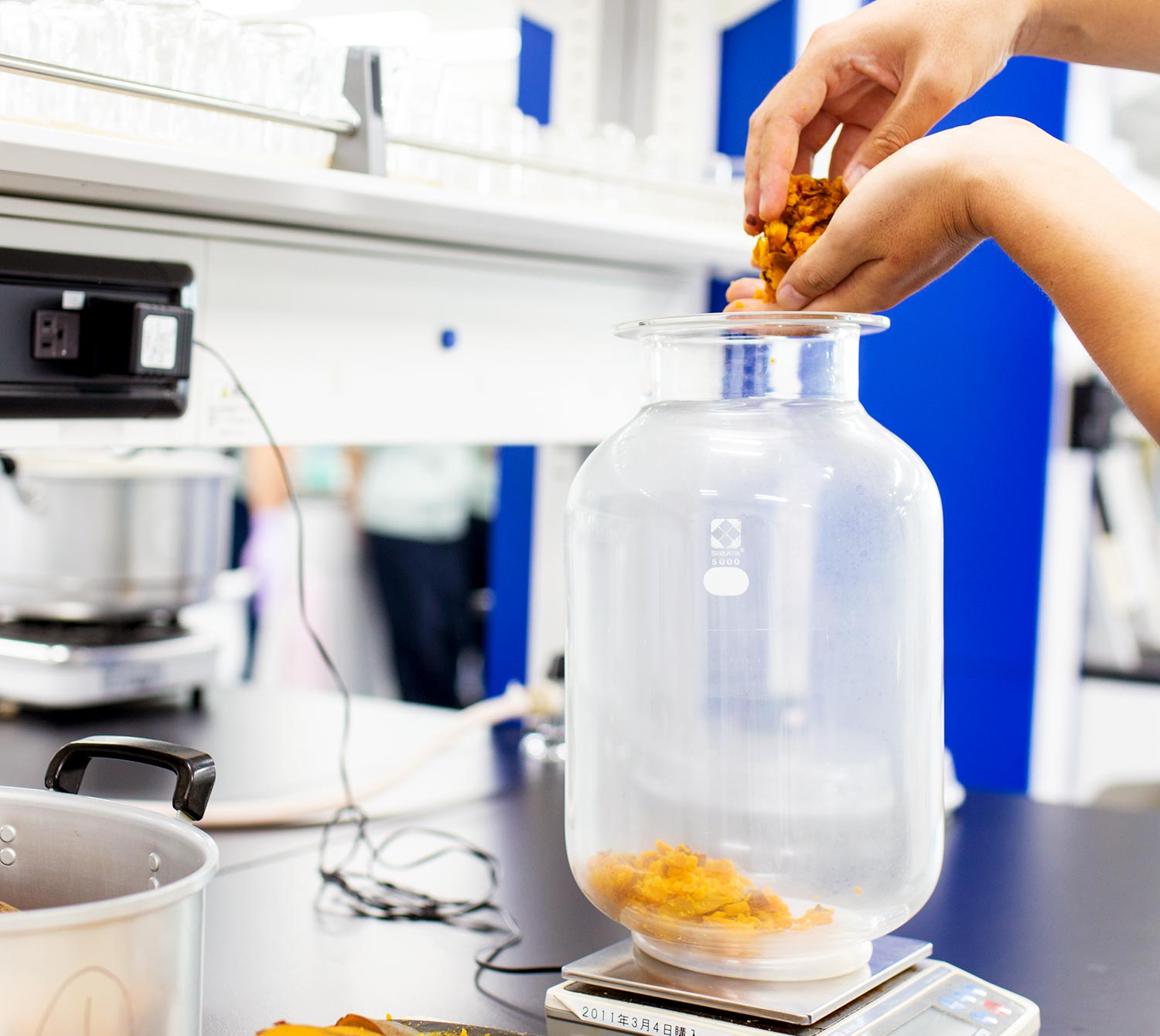
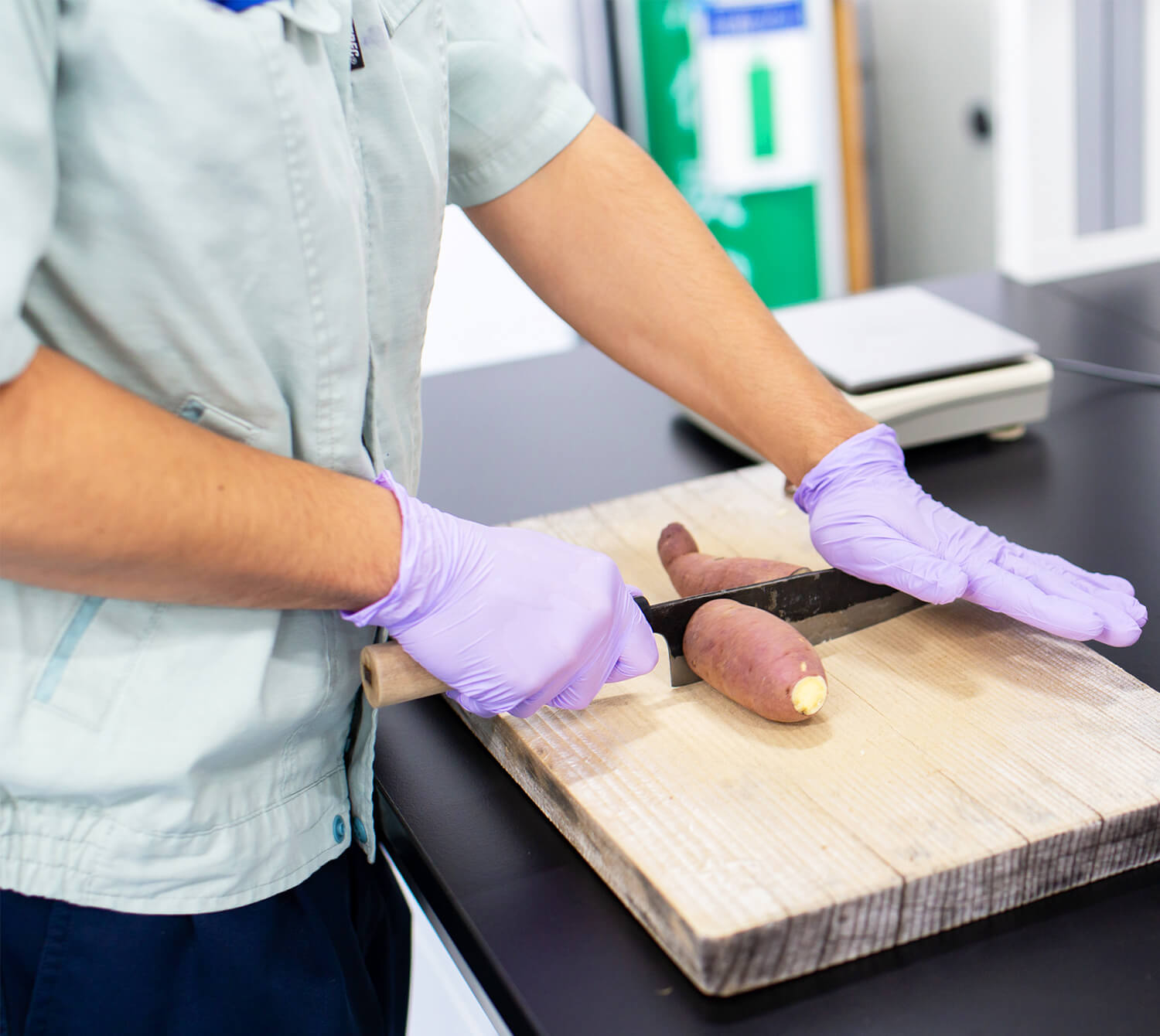
Developing products from sweet potatoes
About five times more sweet potatoes than rice is used when producing our sweet potato shochu, and differences in sweet potato varieties greatly impact the quality. To make an even better product, we identify sweet potato varieties best suited for shochu production by analyzing the characteristics of their cultivation and aromatic components. We also conduct shochu taste and aroma tests.
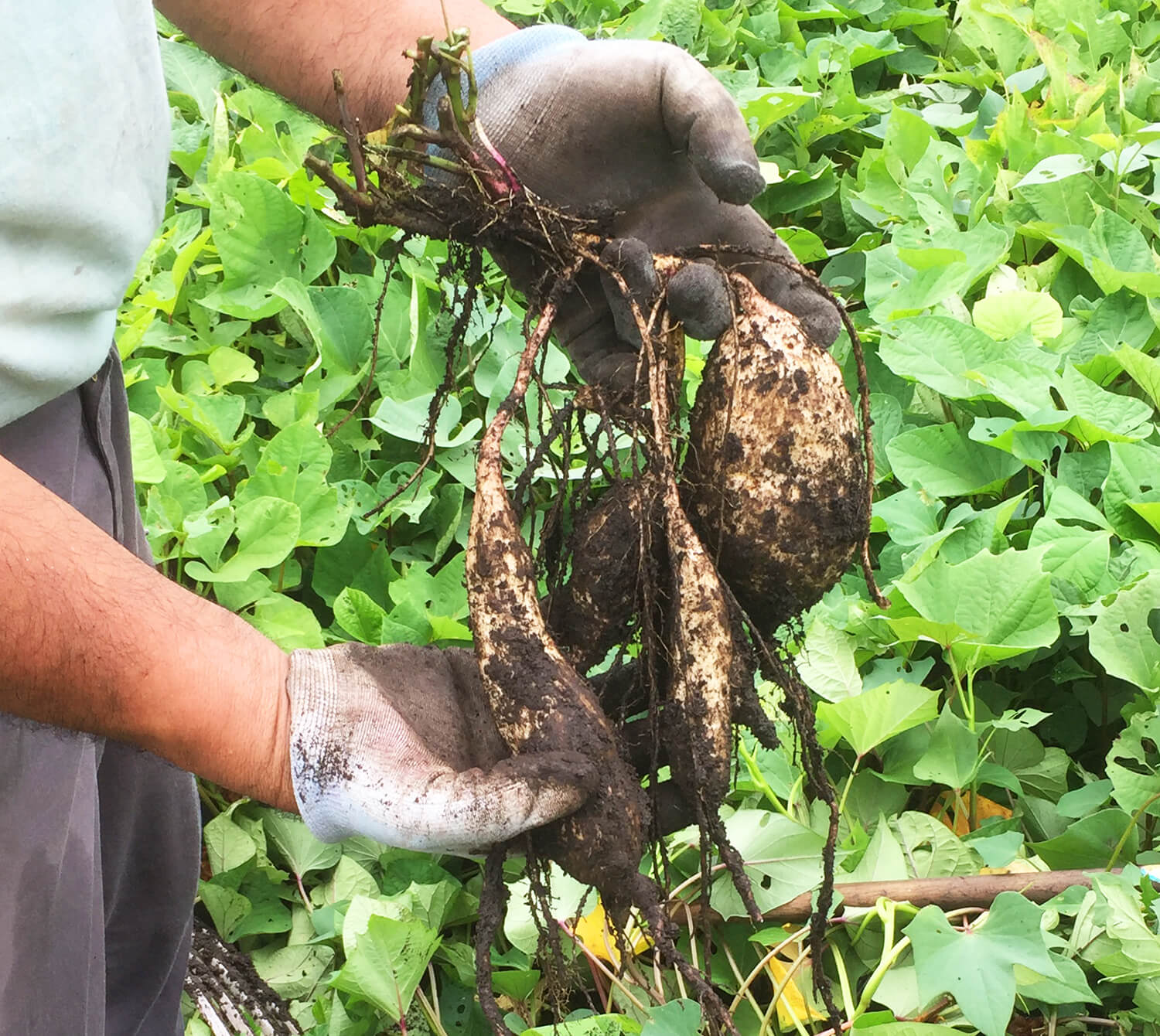
Research on methods and field growing conditions for sweet potato cultivation
To ensure a stable supply of raw materials, we cooperate with related departments, including on how to cultivate sweet potatoes and assess field growing conditions. We also conduct studies with national and prefectural research institutions, universities, and producers.
Research
2

We work to make our shochu even more delicious by incorporating cutting edge science with traditional Japanese fermenting and brewing techniques.
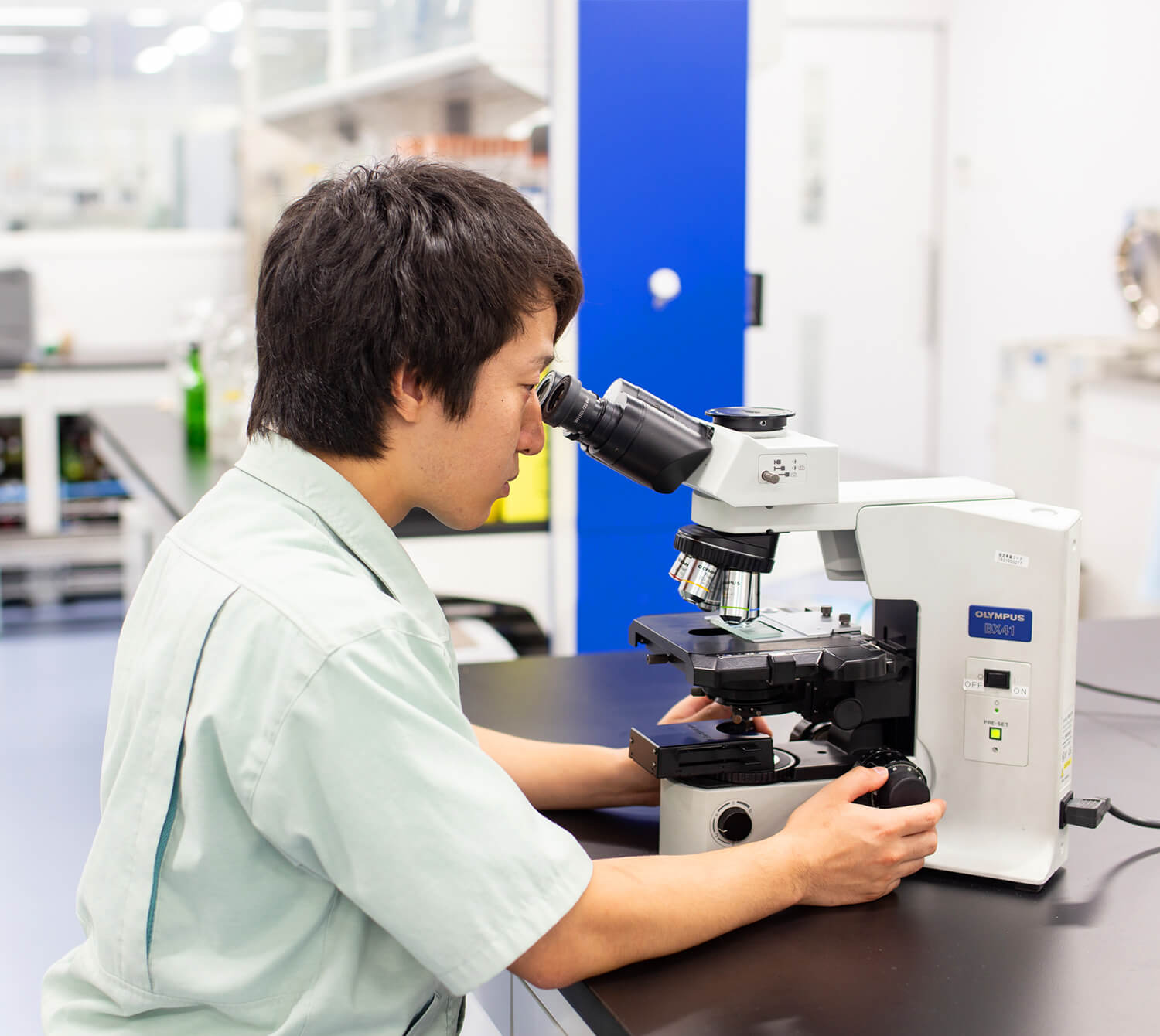
Research on microorganisms used for brewing
As people’s tastes continue to diversify, there is growing demand for a greater variety of flavors. Conducting in-depth research with koji mold and yeast and applying the latest techniques, we develop products that meet the needs of the world.

Developing shochu-making techniques
With the aim of further improving quality, we examine the conditions for koji-making and fermentation to ensure that the koji mold and yeast function effectively. Fine-tuning the conditions when using new strains and ingredients helps us maximize the features of our products.
Research
3

We develop delicious and beneficial products to fulfill customer needs.
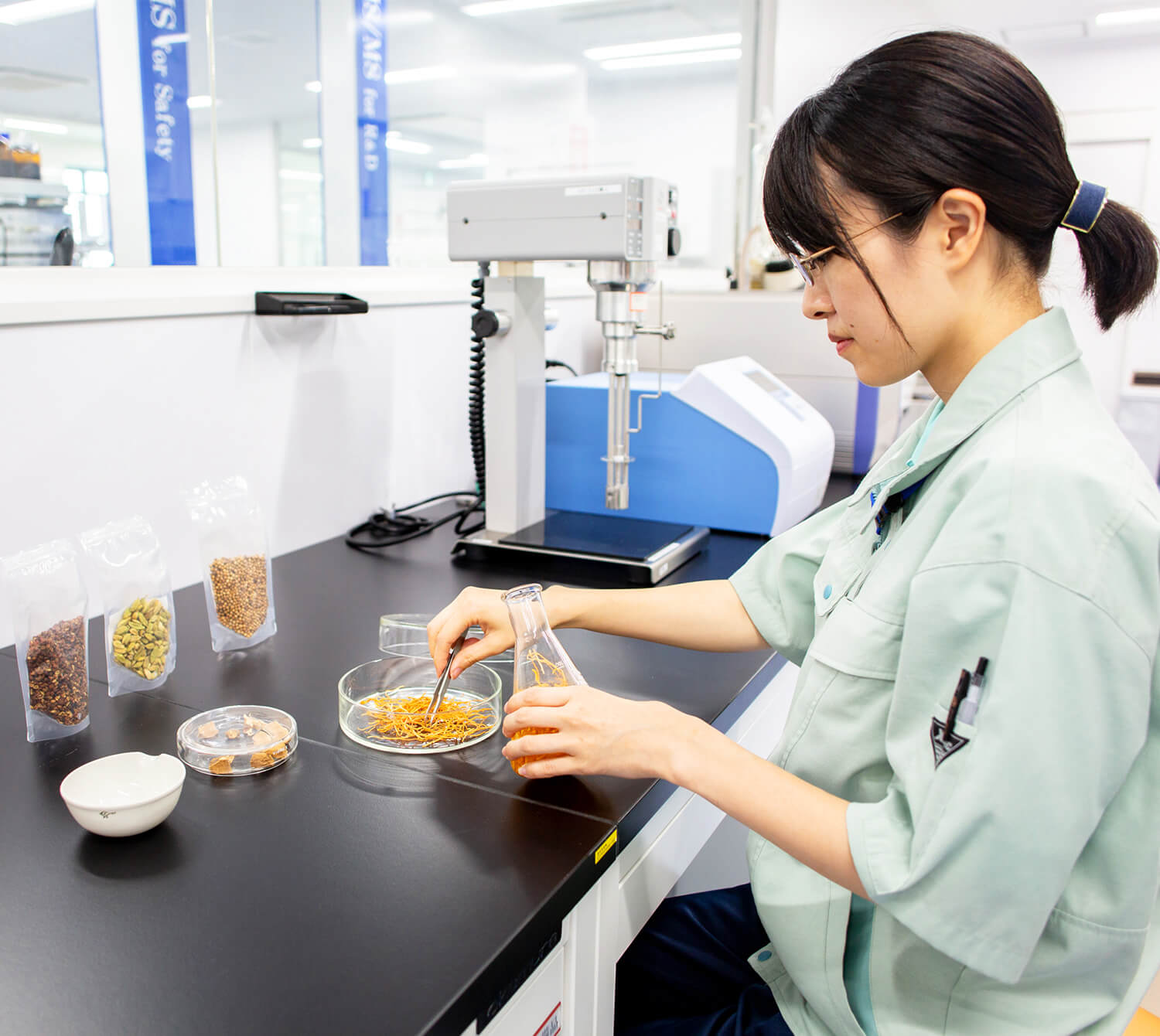
Exploring properties
Food has always been valued for nutrition and flavor. However, in recent years, there has been a growing demand for additional health-related properties. Our answer is “Kenreishu,” a fusion of shochu and highly beneficial ingredients.
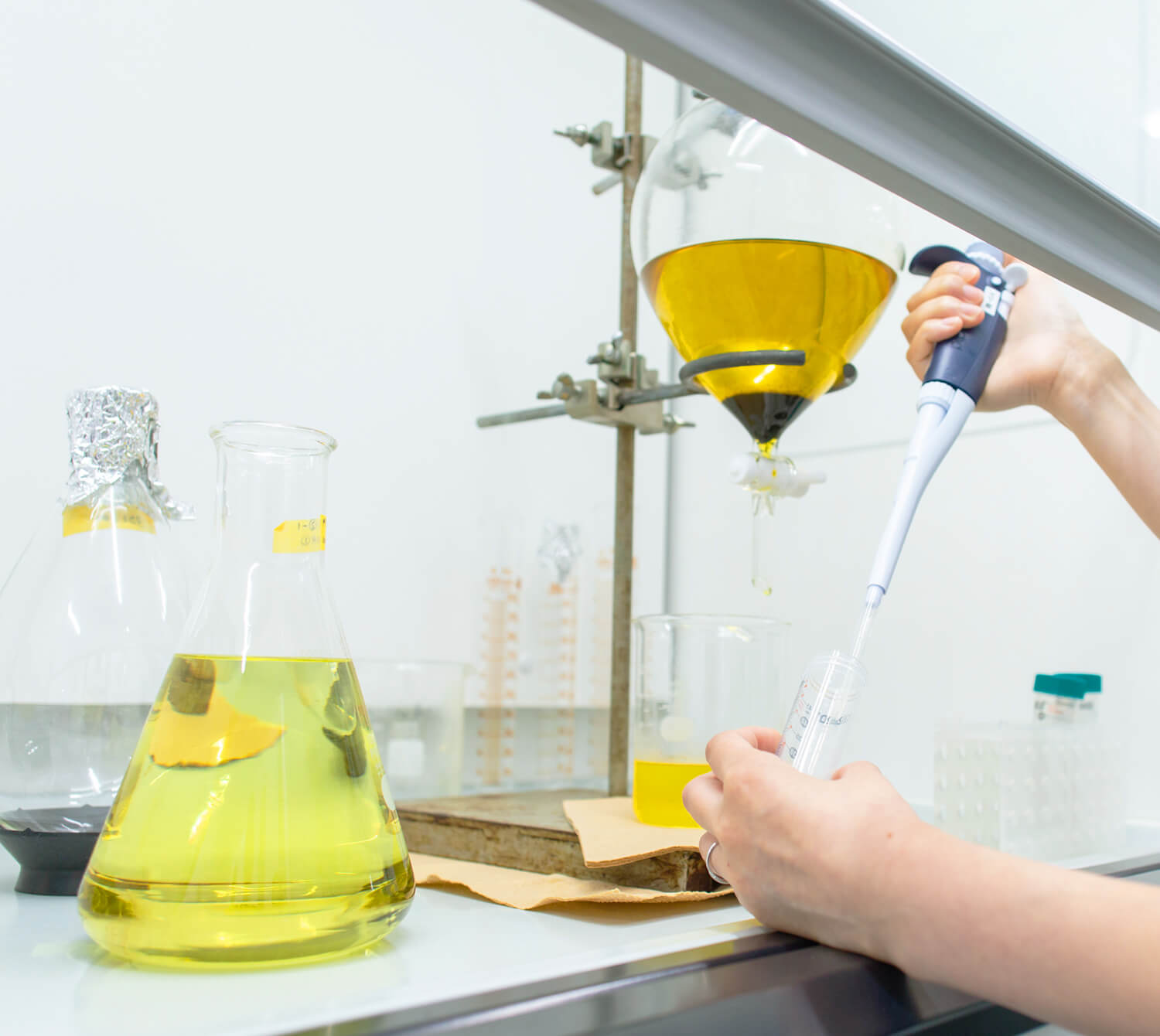
Effective utilization of byproducts
The byproducts generated during the shochu production process contain a variety of components that in the past were thermally recycled*. Now, however, we are researching their potential as food ingredients. This means working to identify their functional components, understanding their effects on the body, and developing ways to use them.
- Instead of simply incinerating waste, this process recovers and utilizes the energy generated during incineration.

Analysis of the components influencing flavor
Shochu contains many components, but some of the components that contribute to its flavor have not yet been identified. That’s why we have developed brewing techniques to control the sweetness and flavor of the shochu we produce. Through a comprehensive analysis of all of the raw materials and shochu taste and aroma tests, we work to identify those as yet unknown components.
